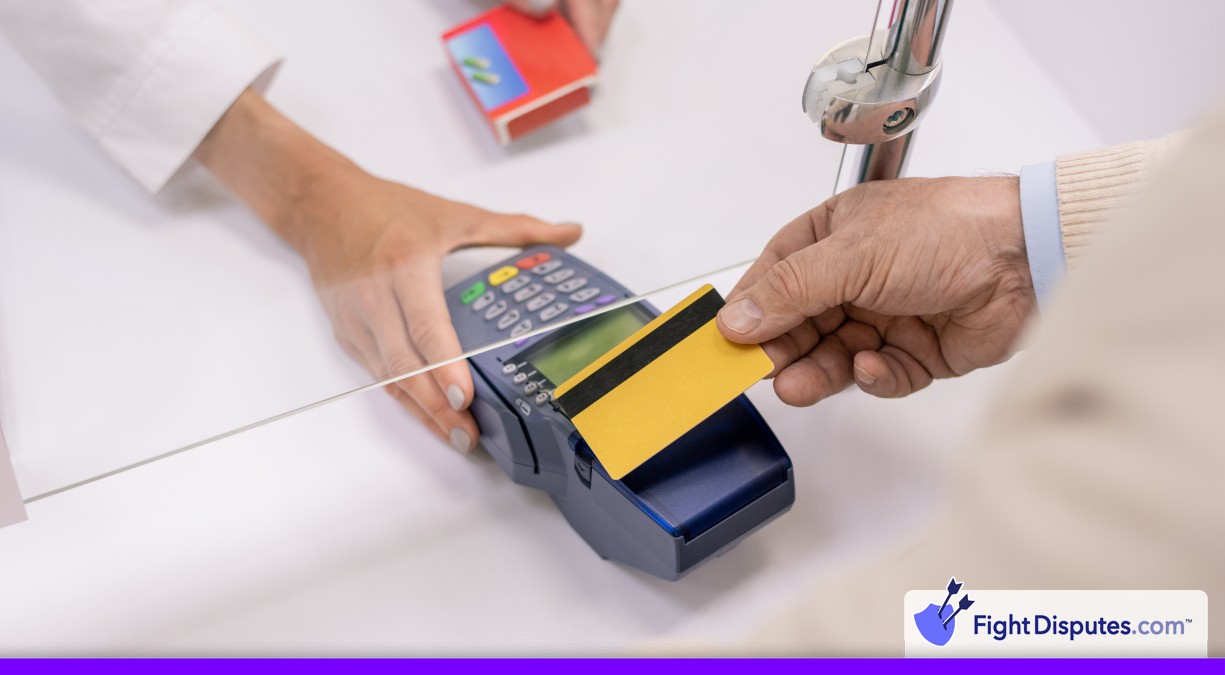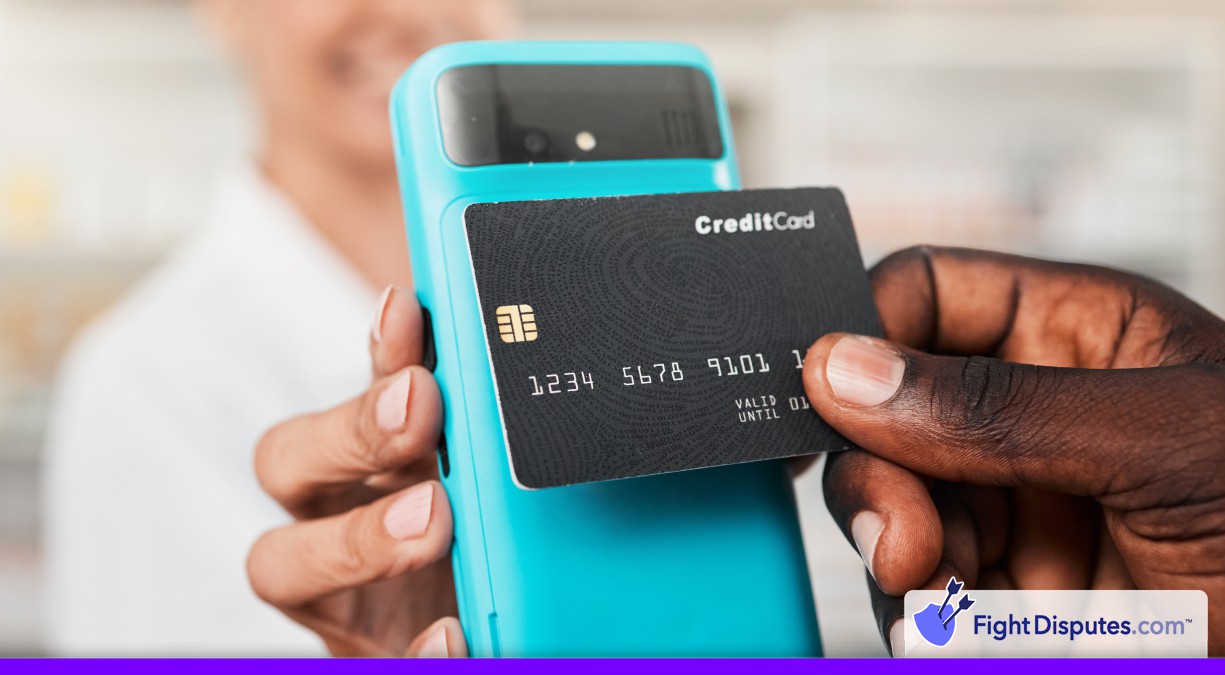10.2: EMV Liability Shift Non-Counterfeit Fraud
Visa Response Code 10.2 is a chargeback response code for chip card transactions that aren’t handled during face-to-face sales. It kicks in whenever a customer shows up with a working chip card but the transaction is run as a magnetic-stripe swipe or is manually keyed instead of going through the chip reader like it should.
Merchants who do that suddenly become responsible for the entire cost of any fraudulent transactions that pass through their system and on top of that they’re also stuck with covering the processing fees that come with those transactions. Merchants have to pay for these costs when they either skip EMV protocols altogether or don’t set them up correctly. Everything can depend on the technical compliance with chip-and-PIN laws and the card networks are serious about this – they want merchants to follow these laws and they enforce them pretty aggressively.
I see these problems affect merchants far more than they should. Most of these chargebacks are completely preventable.
How It Works
A customer walks up and hands you their chip card. Processing the payment the old-fashioned way actually puts you in a pretty risky place. Maybe you swipe the card because the magnetic stripe reader seems faster. Maybe you manually type in the card number because your chip reader has been acting up every day this week. Or maybe you skip asking for their PIN even though the card calls for one. These shortcuts probably feel pretty harmless – and they’re just saving you maybe ten or fifteen seconds per transaction. Most business owners have no clue that these minor time-savers can actually cost them actual money down the road.
Later on, the same customer calls their bank and claims that they never made the charge. They pull up the transaction info and see that something important is missing. Your authorization message doesn’t have the chip data that comes with every chip card transaction.
Liability laws about who pays for the loss kick in right here. Under normal circumstances, the bank that issued the card would absorb the loss from fraud. Processing a chip card without actually reading the chip makes Visa flip the script completely. They move the responsibility for the fraudulent charge directly onto you instead of the bank.
Remember that this liability switch only happens under certain conditions. It has to be either lost, stolen or for a sale that was never received by the customer in the first place. And it needs to have an EMV chip in it. You’re responsible for the entire fraudulent charge if all these conditions line up and you didn’t use the chip reader.
How it Affects Chargeback Prevention
Code 10.2 chargebacks leave you without options. These chargebacks are almost impossible to win if you didn’t use the EMV technology for that transaction. Without proof that you actually read the chip during the sale you’re out of luck.
EMV compliance can become your best protection against fraud liability. Process transactions with the chip readers and the fraud liability moves back to the card issuer. That’s how the whole system used to work before the EMV technology showed up. That’s how it works lately – if you follow the laws.
Chargebacks create a financial mess that most business owners never see coming. These disputes don’t just cost you the original transaction amount – the payment processor also hits you with extra fees that usually run anywhere from $15 to $100 per incident. These fees add up fast and they’re set in stone even if you win the dispute. A single chargeback on a big-ticket item can erase your entire day’s profit margin, sometimes even more if you’re already working on thin margins.
Code 10.2 chargebacks are probably the most frustrating disputes that merchants run into and the main reason is how few options you have to fight them. Most other chargeback types at least give you a decent shot at winning – you can gather your transaction records and customer signatures and build a case that actually has some chance to succeed. Code 10.2 chargebacks make your well-organized documentation completely worthless if you didn’t process the transaction through the chip reader. Your pile of receipts and perfect customer signatures won’t help you at this point.
At least this danger stays within your control. Every time you upgrade a terminal or train your staff to always insert chip cards you lower the chargeback exposure. It’s one of the few areas where better technology starts protecting your revenue.
Example Scenarios
A thief uses a stolen chip card at your old magnetic stripe terminal and you’re liable for the entire transaction. A customer walks in and buys $500 worth of electronics with that stolen card. Later on, the actual cardholder disputes the charge and Visa checks what type of terminal you ran it on. You didn’t process it with EMV technology so the whole $500 loss lands on you.
Sometimes the actual issue isn’t even your equipment – it’s how your staff runs the transactions. A customer’s chip card won’t read after three tries so your cashier decides to just type in the card number instead of asking the customer to swipe the magnetic stripe. That choice to type it in just moved the liability over to you – even though you have a working EMV terminal right there.
Friday afternoon rushes always have plenty of challenges and this particular day was no different. A European customer comes up to your register and hands you their chip-and-PIN card. You run it through the terminal and the screen asks for a signature instead of a PIN.
Two weeks later, a chargeback letter from the bank shows up in your inbox. It explains what went wrong – this particular card type needed PIN verification, not the signature verification that your terminal defaulted to. Sadly your reasoning at the time doesn’t matter anymore – you wind up paying for that entire $200 sale because you skipped the PIN verification step that was actually needed. Retail fraud like this happens all the time – day in and day out at stores all across the country.
Business owners need to worry about how fast that one fraudulent transaction can turn into a big financial problem. These aren’t small losses either. These situations can very quickly cost hundreds or even thousands of dollars. That’s especially true once the liability gets moved right back to the business. There’s only a short window to catch these red flags. That makes timing critical for finding and stopping a suspicious transaction.
Requirements and Timeframes
A10.2 chargeback lands on your desk and time quickly turns into your biggest enemy. Visa gives you a straight 30 days to pull together the evidence and make your case. Let that deadline slip by and the dispute is over before it even begins – there’s basically no way to appeal or get a second chance.
Fight back against a 10.2 chargeback and you have only two options. You can either prove that you processed the original transaction with an EMV chip reader or you can show the paperwork that you’ve already issued a refund to the customer. You literally have only these two ways to win this dispute.
Your evidence package has to be solid to have any chance of success. Going the EMV-compliance path means you’ll need transaction data that plainly shows the chip authentication took place – your authorization logs have to be complete and ready to grab at any time. Choosing the refund path instead requires a refund receipt with amounts and dates that line up.
Visa law changes in June 2024 already made laws harder for payment processing businesses. Last month – even stricter record-keeping laws came into effect. Most merchants lose these disputes more often than not and the culprit’s nearly always the same – they just can’t find the records when they need them most. They’re busy digging through stacks of files and folders as that 30-day deadline quietly slips right past.
Keeping all your transaction data organized in a way that actually makes sense lets you put your hands on what you need without any fuss at all. Make sure those authorization replies and EMV compliance indicators are stored somewhere you can actually reach them instead of turning your entire office upside down just to find a single document.
Frequently Asked Questions
What's the difference between 10.2 and other fraud response codes?
A 10.2 response code on your terminal means one particular event happened during that transaction. Your customer did have a real chip card in their hand. Your terminal never actually read the chip for some reason. Maybe you swiped the card through the magnetic stripe reader instead of the chip and maybe your chip reader just happened to fail that day.
This response code only shows up during face-to-face transactions in your store and never with online orders or phone payments. Visa tracks this and it lets them know that you had the chance to use the chip reader but something went wrong along the way.
10.2 codes are tough because they're different from most other fraud-related response codes you might run into. Your customer handed you a completely legitimate card - nobody created a counterfeit copy or stole the card number from somewhere else and the actual cardholder was usually standing right there making an actual purchase. Because your terminal didn't process the chip correctly, you automatically lose anychargeback disputethat comes up later.
Other response codes usually show up with completely fake cards or stolen card numbers that are used for online purchases. These situations come with their own set of laws and protections. A 10.2 code is very particular - it only happens with legitimate chip cards in your store that get processed incorrectly.
Every chip card comes with advanced security features built right into that small metal square on the front. Skipping over the chip and just swiping the card through the magnetic stripe reader means that you'll bypass these built-in security measures. Visa tracks these transactions and if any problems come up down the road they'll hold you responsible for not using the available security technology.
Can I dispute a 10.2 chargeback?
Yes, but this code leaves your dispute options very limited and frankly it's one of the more frustrating parts of the chargeback process. It's so frustrating because you can't actually argue about whether the transaction was legitimate or not. Solid proof that the customer authorized the sale and walked away happy with their item won't help you win this dispute - none of that evidence matters.
You can only win two ways - prove that you processed the transaction correctly with EMV chip technology or show the paperwork that you already gave the customer their money back. You have only those options and the bank just doesn't care if the customer is being dishonest about the fraud claim. They basically just care about how you processed that payment when it happened.
Your best bet is to focus your dispute work on the technical facts of the transaction. Get together your EMV compliance records and transaction logs and show that your card terminal was working when the sale went through. Show that you followed each step in the process correctly. Without proof of the technical compliance part, you're almost certain to lose this dispute.
I know it sounds very unfair when you're certain that the transaction was completely legitimate. This liability change was designed to push merchants toward EMV chip technology everywhere. Not using EMV technology means you automatically take on the fraud risk that comes with that choice. That's just how this system works.
What happens if my chip reader breaks during a transaction?
Your chip reader breaks at the worst possible second and you might think you're off the hook for EMV liability. That's not how it works at all. Visa doesn't care if your equipment fails on you. Processing that transaction in a different way still puts you on the line for any fraud that might happen later.
This situation puts merchants in a tough position. Your customer is standing right there with their card ready and of course you want to make the sale. Swiping that card instead of inserting the chip means that you'll take on all the fraud liability that comes with it - even if your chip reader just died five minutes before they walked in.
You protect yourself best by keeping backup terminals ready at all times. You can swap out a broken reader much faster and get back to business. Some merchants keep an extra terminal in the back office specifically for this reason.
You should also create easy policies for your staff about equipment failures. They need to know that accepting the liability just isn't worth it for most transactions.
Document your equipment problems as they happen. Photos, error messages and maintenance records should all be saved and this won't change Visa's laws at all. These records help you track patterns and fix problems much faster going forward.
How quickly do I need to upgrade to EMV terminals?
Immediately! EMV compliance puts money on the line for your business and each transaction you process without it opens up a chance for losses you'll be covering out of your own pocket. This basic technical requirement has become a business choice that matters about how you manage the danger.
Plenty of merchants still get caught off guard by these chargebacks when they thought their payment processing was working just fine. Payment processing that works and payment processing that protects you are two very different elements in today's card industry. Every time a customer swipes a magnetic-stripe card at a non-compliant terminal, you're assuming that the transaction is legitimate - and your business is the one taking on the danger.
Non-EMV terminals may seem to work just fine. Liability changes took effect some time ago and now leave your business in a very vulnerable position. Every transaction that goes through those old terminals makes you responsible for any fraud that happens - you'll have to pay for those costs out of your own pocket. It's not like there's some big scary deadline coming up that you need to worry about. Every day you wait means you take a chance with your money for no reason. These losses are completely preventable and you can stop them from happening. EMV services can protect your business from these avoidable costs and it's well worth a look at your options soon.
 Call (844) NO-DISPUTES
Call (844) NO-DISPUTES




